17625-83-1
| Name | 4'-Aminobenzanilide |
|---|---|
| Synonyms |
1-amino-4-benzoylaminobenzene
Aminobenzaldehydepolymer N1-Benzoyl-1,4-diaminobenzene 4-benzoylamino-aniline EINECS 241-603-0 P-AMINOBENZANILIDE MFCD00035777 4′-Aminobenzanilide |
| Density | 1.171g/cm3 |
|---|---|
| Boiling Point | 278.1ºC at 760mmHg |
| Melting Point | 127-131 °C(lit.) |
| Molecular Formula | C13H12N2O |
| Molecular Weight | 212.24700 |
| Flash Point | 122ºC |
| Exact Mass | 212.09500 |
| PSA | 55.12000 |
| LogP | 3.17530 |
| Vapour Pressure | 0.917mmHg at 25°C |
| Index of Refraction | 1.41 |
| Storage condition | Refrigerator, Under Inert Atmosphere |
Synonym:1-Amino-4-benzoylaminobenzen Section 2 - COMPOSITION, INFORMATION ON INGREDIENTS
Risk Phrases: 36/37/38 Section 3 - HAZARDS IDENTIFICATION EMERGENCY OVERVIEW
Irritating to eyes, respiratory system and skin. Potential Health Effects Eye: Causes eye irritation. Skin: Causes skin irritation. May be harmful if absorbed through the skin. Ingestion: May cause irritation of the digestive tract. May be harmful if swallowed. Inhalation: Causes respiratory tract irritation. May be harmful if inhaled. Chronic: Not available. Section 4 - FIRST AID MEASURES Eyes: Flush eyes with plenty of water for at least 15 minutes, occasionally lifting the upper and lower eyelids. Get medical aid. Skin: Get medical aid. Flush skin with plenty of water for at least 15 minutes while removing contaminated clothing and shoes. Ingestion: Get medical aid. Wash mouth out with water. Inhalation: Remove from exposure and move to fresh air immediately. If not breathing, give artificial respiration. If breathing is difficult, give oxygen. Get medical aid. Notes to Physician: Treat symptomatically and supportively. Section 5 - FIRE FIGHTING MEASURES General Information: As in any fire, wear a self-contained breathing apparatus in pressure-demand, MSHA/NIOSH (approved or equivalent), and full protective gear. Extinguishing Media: Use foam, dry chemical, or carbon dioxide. Section 6 - ACCIDENTAL RELEASE MEASURES General Information: Use proper personal protective equipment as indicated in Section 8. Spills/Leaks: Vacuum or sweep up material and place into a suitable disposal container. Section 7 - HANDLING and STORAGE Handling: Avoid breathing dust, vapor, mist, or gas. Avoid contact with skin and eyes. Storage: Store in a cool, dry place. Store in a tightly closed container. Section 8 - EXPOSURE CONTROLS, PERSONAL PROTECTION Engineering Controls: Facilities storing or utilizing this material should be equipped with an eyewash facility and a safety shower. Use adequate ventilation to keep airborne concentrations low. Exposure Limits CAS# 17625-83-1: Personal Protective Equipment Eyes: Not available. Skin: Wear appropriate protective gloves to prevent skin exposure. Clothing: Wear appropriate protective clothing to prevent skin exposure. Respirators: Follow the OSHA respirator regulations found in 29 CFR 1910.134 or European Standard EN 149. Use a NIOSH/MSHA or European Standard EN 149 approved respirator if exposure limits are exceeded or if irritation or other symptoms are experienced. Section 9 - PHYSICAL AND CHEMICAL PROPERTIES Physical State: Solid Color: Not available. Odor: Not available. pH: Not available. Vapor Pressure: Not available. Viscosity: Not available. Boiling Point: Not available. Freezing/Melting Point: Not available. Autoignition Temperature: Not available. Flash Point: Not available. Explosion Limits, lower: Not available. Explosion Limits, upper: Not available. Decomposition Temperature: Solubility in water: Specific Gravity/Density: Molecular Formula: C13H12N2O Molecular Weight: 212.25 Section 10 - STABILITY AND REACTIVITY Chemical Stability: Not available. Conditions to Avoid: Incompatible materials. Incompatibilities with Other Materials: Strong oxidizing agents, acids, acetic anhydride, acid chlorides, carbon dioxide. Hazardous Decomposition Products: Nitrogen oxides, carbon monoxide, carbon dioxide. Hazardous Polymerization: Has not been reported Section 11 - TOXICOLOGICAL INFORMATION RTECS#: CAS# 17625-83-1 unlisted. LD50/LC50: Not available. Carcinogenicity: N-Benzoylphenylenediamine - Not listed by ACGIH, IARC, or NTP. Section 12 - ECOLOGICAL INFORMATION Section 13 - DISPOSAL CONSIDERATIONS Dispose of in a manner consistent with federal, state, and local regulations. Section 14 - TRANSPORT INFORMATION IATA No information available. IMO No information available. RID/ADR No information available. Section 15 - REGULATORY INFORMATION European/International Regulations European Labeling in Accordance with EC Directives Hazard Symbols: XI Risk Phrases: R 36/37/38 Irritating to eyes, respiratory system and skin. Safety Phrases: S 26 In case of contact with eyes, rinse immediately with plenty of water and seek medical advice. S 37/39 Wear suitable gloves and eye/face protection. WGK (Water Danger/Protection) CAS# 17625-83-1: 2 Canada CAS# 17625-83-1 is listed on Canada's NDSL List. CAS# 17625-83-1 is not listed on Canada's Ingredient Disclosure List. US FEDERAL TSCA CAS# 17625-83-1 is listed on the TSCA inventory. SECTION 16 - ADDITIONAL INFORMATION N/A |
| Symbol |

GHS07 |
|---|---|
| Signal Word | Warning |
| Hazard Statements | H315-H319-H335 |
| Precautionary Statements | P261-P305 + P351 + P338 |
| Personal Protective Equipment | dust mask type N95 (US);Eyeshields;Gloves |
| Hazard Codes | Xi: Irritant; |
| Risk Phrases | R36/37/38 |
| Safety Phrases | S26-S36 |
| RIDADR | NONH for all modes of transport |
| WGK Germany | 3 |
| HS Code | 2924299090 |
| Precursor 9 | |
|---|---|
| DownStream 8 | |
| HS Code | 2924299090 |
|---|---|
| Summary | 2924299090. other cyclic amides (including cyclic carbamates) and their derivatives; salts thereof. VAT:17.0%. Tax rebate rate:13.0%. . MFN tariff:6.5%. General tariff:30.0% |
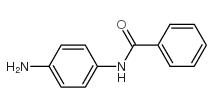

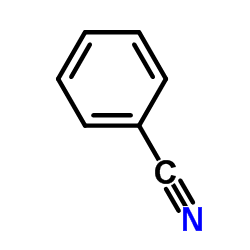
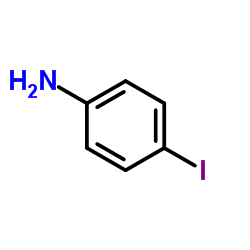
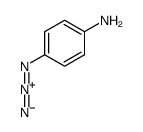

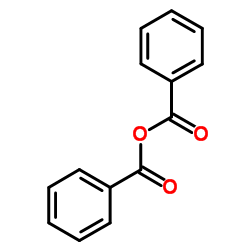
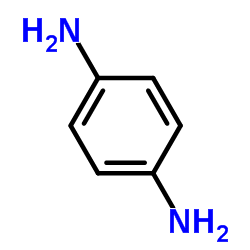
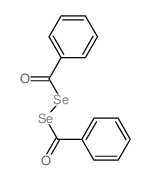
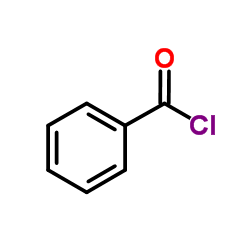
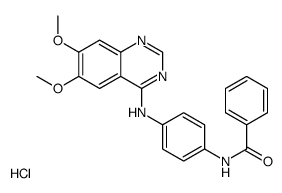
![PENTANOIC ACID, 5-[[4-(BENZOYLAMINO)PHENYL]AMINO]-5-OXO- structure](https://image.chemsrc.com/caspic/493/134485-49-7.png)
![BENZAMIDE, N-[4-[(PHENYLSULFONYL)IMINO]-2,5-CYCLOHEXADIEN-1-YLIDENE]- structure](https://image.chemsrc.com/caspic/146/124400-30-2.png)
![BENZAMIDE, N-[2-(ACETYLOXY)-4-[(PHENYLSULFONYL)AMINO]PHENYL]- structure](https://image.chemsrc.com/caspic/249/124400-45-9.png)
![BENZAMIDE, N-[2-(4-MORPHOLINYL)-4-[(PHENYLSULFONYL)AMINO]PHENYL]- structure](https://image.chemsrc.com/caspic/287/124400-44-8.png)
![BENZAMIDE, N,N'-[(2,5-DICHLORO-3,6-DIOXO-1,4-CYCLOHEXADIENE-1,4-DIYL)BIS(IMINO-4,1-PHENYLENE)]BIS- structure](https://image.chemsrc.com/caspic/196/87021-59-8.png)
![CARBAMIC ACID, [5-(BENZOYLAMINO)-1H-BENZIMIDAZOL-2-YL]-, METHYL ESTER structure](https://image.chemsrc.com/caspic/324/87127-10-4.png)